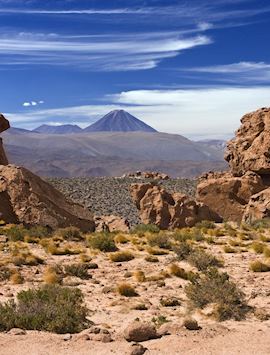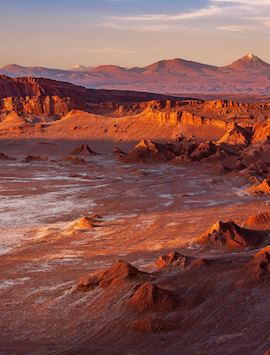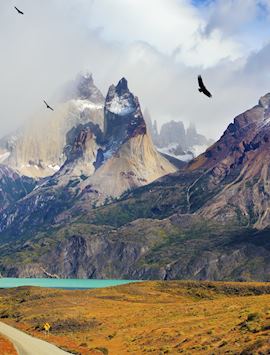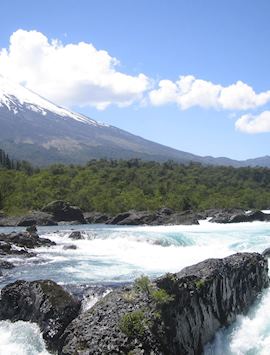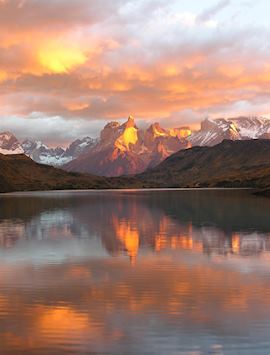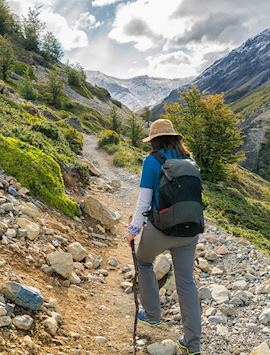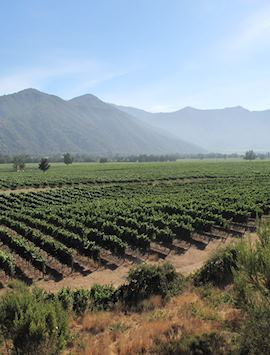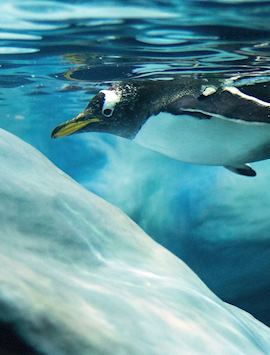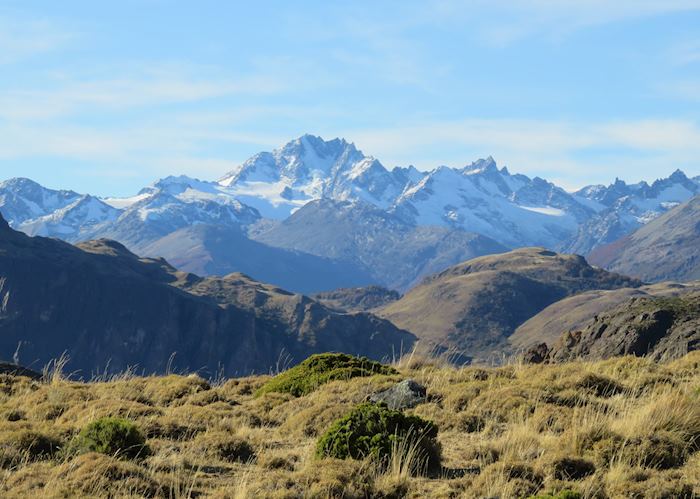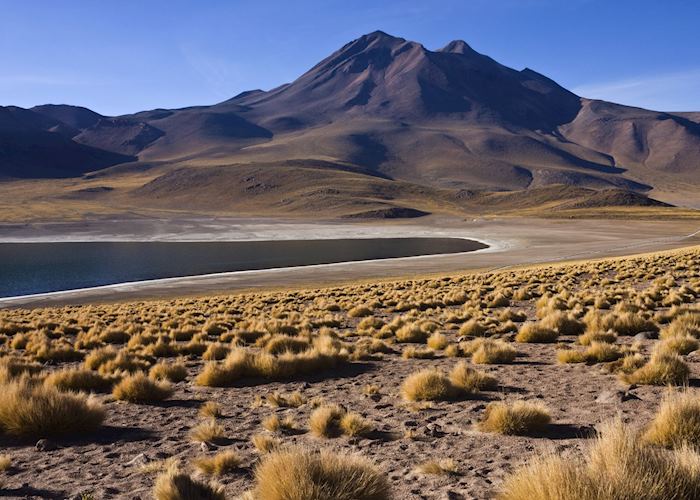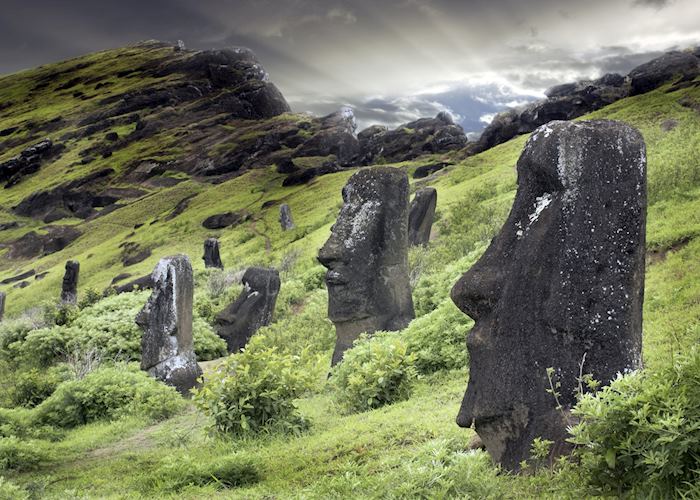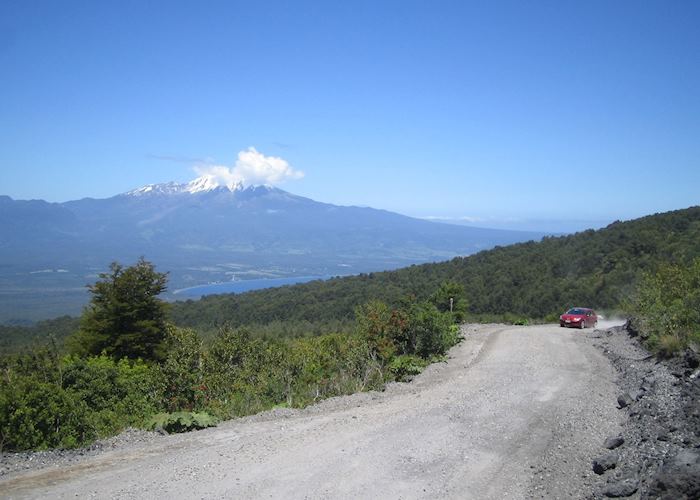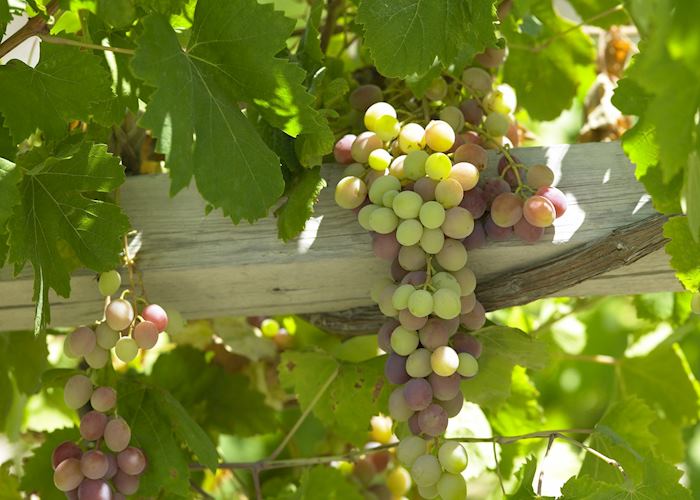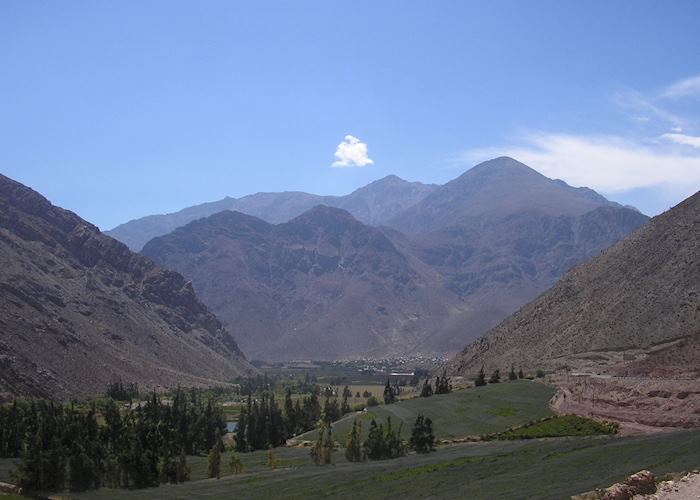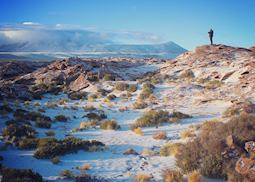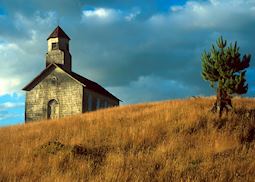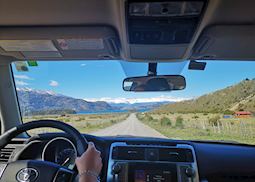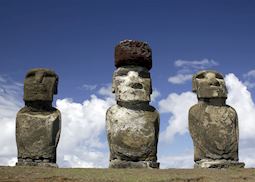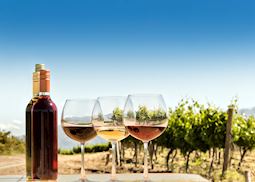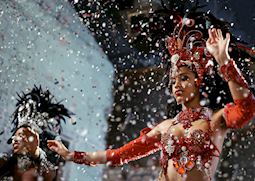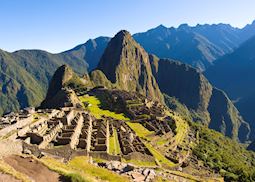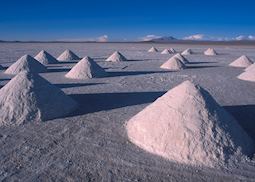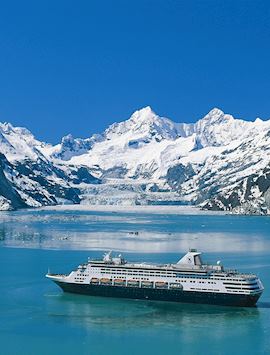
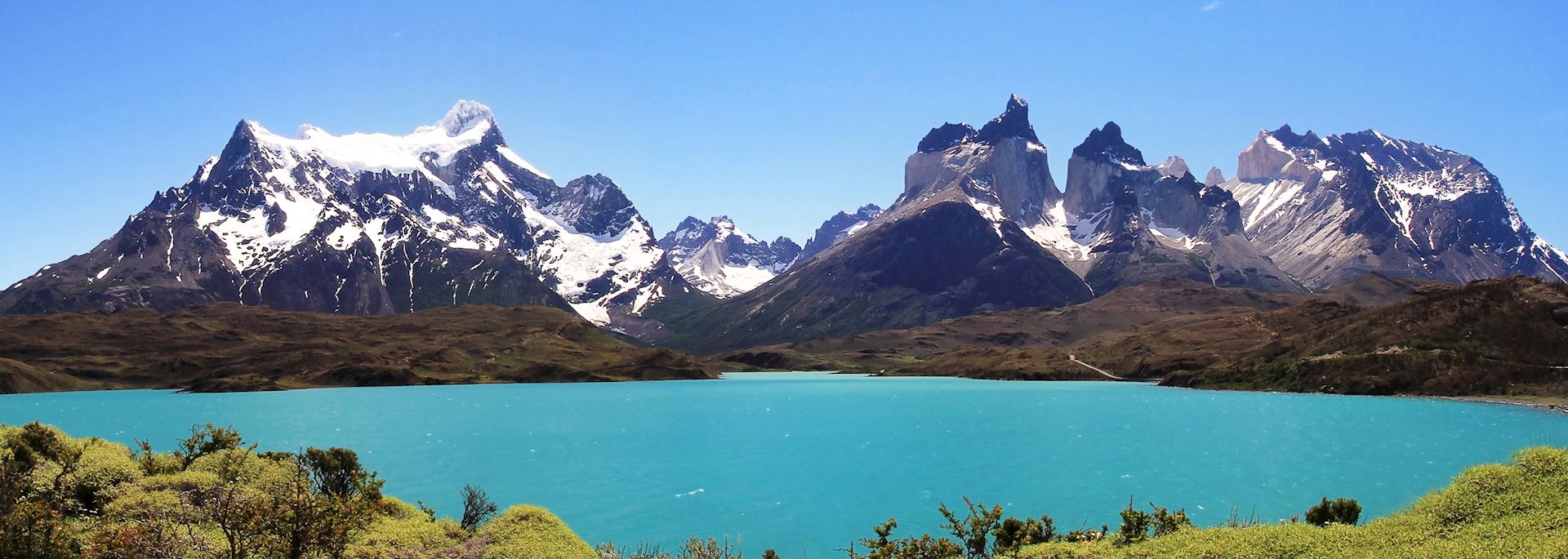
Tailor-made Chile holidays shaped around your passions
The Atacama — the highest, driest desert on Earth. The uninhabitable icefields of Tierra del Fuego. The inscrutable moai of Easter Island. On a tailor-made holiday to Chile with Audley, you’ll see the scenic highlights — and much more — your way. We’ll design your ideal trip with you, paying close attention to your interests, your travel style and your budget. Our Chile specialists know the country inside out and can lead you to experiences you won’t find in a guidebook.
Debate the merits of local cabernet sauvignons over carmeneres, Chile’s foremost red wines, at a chic vineyard retreat in Chile’s central winelands. Lose yourself in the higgledy-piggledy streets of Valparaíso and admire their artistic murals. Explore the island community of Chiloé with its troll-infused mythology. Strap on your spikes to hike a Patagonian glacier, or nose your kayak into vaulting caves of marble.
Stargazing in Elqui Valley. Horseback riding with gauchos on pampas trails. The granite spires of Torres del Paine, and the toothy peaks of the Argentine Lake District. What excites you? Travel at your own pace, in your own style, with the confidence that we’ll show you the best options, wherever you go.
Suggested tours for Chile
Known for its world-class wineries and dynamic landscape, Chile's diversity means it offers much more besides. We'll shape your trip around you, whether you want to take in the majestic salt flats of the Atacama Desert, the ice glaciers of Torres del Paine National Park, or the ancient moai statues of Easter Island.
Why travel with Audley?
- 100% tailor-made tours
- Fully protected travel
- Established for over 25 years
- 98% of our clients would recommend us
Best time to visit
Our specialists advise on the best months to visit Chile, including information about climate, events and festivals.
Request our brochure
Covering all seven continents, The World Your Way shows you how you can see the world with us. It features trip ideas from our specialists alongside hand-picked stays and experiences, and introduces our approach to creating meaningful travel experiences.
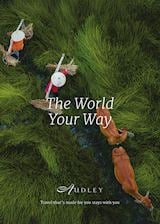
Useful information for planning your holiday in Chile
Chile’s official language is Spanish, though a few indigenous languages are also in use, including Rapa Nui, the Polynesian language of Easter Island. English is widely understood and spoken by many people.
Chile’s currency is the peso ($ or CLP).
For the latest travel advice for Chile, including entry requirements, health information, and the safety and security situation, please refer to the Foreign, Commonwealth & Development Office website.
There’s lots of fine seafood in Chile thanks to the length of its coastline. The congrio (conger eel) is a national dish, and caldillo de congrio (a soup served with congrio, plus onion and potato balls) is very tasty.
Another typical Chilean dish is cazuela de ave, a nutritious stew containing large pieces of chicken, potatoes, rice, and maybe onions and green peppers. Other traditional dishes include humitas — mashed corn, wrapped in corn leaves and steamed — and pastel de choclo, a pie made of chicken, topped by sweetcorn and sugar, and baked in the oven.
Chile’s geographical extremes means that you can explore a real variety of landscapes in the course of the same trip: you might watch geysers erupt at dawn in the Atacama Desert, then just a few days later take a boat trip to the terminal face of a glacier in Patagonia’s Torres del Paine National Park — or go hiking around a snow-topped volcano in the Lake District. The great outdoors is naturally a huge element of trips to Chile, but the country has many other dimensions too, including winelands and some of the world’s best stargazing due to its exceptionally clear skies free from light pollution. There’s also the arty, idiosyncratic port city of Valparaíso to explore, and Easter Island, home to carved moai and a Polynesian culture unlike anything you’ll find on the mainland. You can read more about what to do in Chile in our guide to its highlights.
There’s a real variety of options, from state-of-the-art ecolodges in Torres del Paine National Park to chalet-like guesthouses and B&Bs in the Lake District. In the cities of Santiago and Valparaíso, we’ve scouted out boutique, characterful establishments (often with excellent views) rather than impersonal corporate hotels. In the central valleys, you can stay in a traditional casa de campo (country house), or even, in the Elqui Valley, a dome-like structure with a detachable roof purpose-built for stargazing. And, in the far south of Patagonia, you can take a three-day cruise of the Tierra del Fuego icefields, staying on an expedition vessel specially designed to navigate these frozen waters. Our specialists have stayed at all our properties so they can hand-pick the best places to stay based on your preferences.
Most journeys start in Santiago, Chile’s capital, which has a dramatic backdrop of the Andes (part of the vast mountain range that runs along the entire west coast of South America, from Venezuela to Chile and Argentina). From here, you can travel to almost anywhere in the country.
You can reach Valparaíso, a coastal city with a vibrant street-art and seafood scene, by car from Santiago in a couple of hours. Chile’s far north has the lunar-like valleys and salt flats of the Atacama Desert, the world’s highest and driest non-Polar desert. Further south lie the lush, green, vineyard-braided central valleys, where you can spend days hopping between bodegas (wine cellars). As you continue south, there’s the alpine-like Lake District (if the Alps had volcanoes), before you hit Patagonia proper: all pampas, wide-open plains, glacier-striated mountains, and remote icefields. And, a six-hour flight from the capital will bring you to Easter Island with its enigmatic moai. Our specialists have visited the best places to go in Chile so they can help you decide where’s best for your trip.
You can fly directly from London to Santiago, Chile’s capital, in 14 hours. It’s also possible to fly to Chile from London via Madrid, Buenos Aires, or São Paulo, which takes about 16 hours.
Chile’s time zone is GMT -4, or GMT -3 in British summertime. You might experience a bit of jet lag, so we recommend getting plenty of fresh air and ideally sunlight on the day of your arrival, if possible. In Santiago, we can arrange a variety of guided walking tours or suggest walks to local points of interest near your hotel.
The best way to get around Chile is by road, though the country’s colossal length means that flying is unavoidable if you’d like to explore more than one region in the course of the same trip — we’ll help you choose the best options to cut down on travel time. For most of your trip, we’ll arrange private transfers for you with your own driver. However, the wild landscapes and long, empty stretches of road in the Lake District and Patagonia are the stuff of road-trip legend, and we’ll help you get behind the wheel yourself here, from planning your route to taking care of the logistics. Our travel guide will give you more ideas for a self-drive trip in Chile.
Yes, but keep your passport and entrance card (tarjeta de turismo) to hand while driving.
Use our travel tool to find up-to-date visa and passport requirements for Chile. Enter where you’re travelling to and from (including any stopover destinations en route or flight layovers), along with your intended travel dates and passport details, for a full list of requirements.
Your GP can provide you with immunisation advice for Chile, but it’s a good idea to be up to date with the recommended vaccinations for your home country. We also recommend checking Chile’s profile on the Travel Health Pro website.
Chile in pictures
Our expert guides to travelling in Chile
Written by our specialists from the viewpoint of their own travels, these guides will help you decide on the shape of your own trip to Chile. Aiming to inspire and inform, we share our recommendations for how to appreciate Chile at its best.
-
![Introducing Chile]()
Introducing Chile
Our short video introduces Chile and gives a flavour of what to expect in this country of volcanoes and glaciers.
-
![My travels in Patagonia]()
My travels in Patagonia
Latin America Specialists Nick and Iain have recently returned from a research trip to Patagonia where they trekked through the spectacular scenery of Torres del Paine National Park.
-
5 experiences to try on your activity holiday in Chile (that aren’t hiking) ![Atacama early morning]()
5 experiences to try on your activity holiday in Chile (that aren’t hiking)
5 experiences to try on your activity holiday in Chile (that aren’t hiking)
Chile lends itself to outdoor activity, says Chile specialist Chloe, and you can try everything from kayaking to mountain biking. The best part is that you don’t need previous experience.
Read this guide -
What to do in Chile: our highlights guide ![A church in southern Patagonia, Chile]()
What to do in Chile: our highlights guide
What to do in Chile: our highlights guide
Chile is a land of geographical contrasts, from the arid Atacama Desert to the peaks and glaciers of Patagonia. Cultural differences are equally stark as Spanish-built wooden churches on Chiloé Island vie for the visitor’s attention along with the incongruous and mysterious stone statues on Easter Island.
Read this guide -
Self-drive holidays in Chile: 3 wilderness road trips ![Driving between Balmaceda and Lago General Carrera]()
Self-drive holidays in Chile: 3 wilderness road trips
Self-drive holidays in Chile: 3 wilderness road trips
When it comes to driving trips in Chile, you’ll find the most fulfilling journeys are to be had in the Lake District and Chilean Patagonia, says Audley Chile specialist Chloe. Just make sure you allow time to stop and explore.
Read this guide -
Our guide to Easter Island ![Moai, Easter Island]()
Our guide to Easter Island
Our guide to Easter Island
Audley travel expert Richard explains how to get the most out of your visit to the mysterious, far-flung Easter Island. He suggests the best ways to see the moai statues as well as other ways to experience the island’s heritage.
Read this guide



